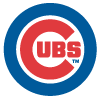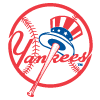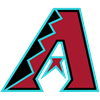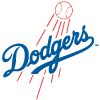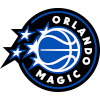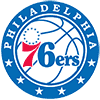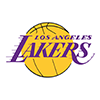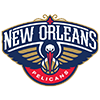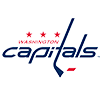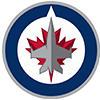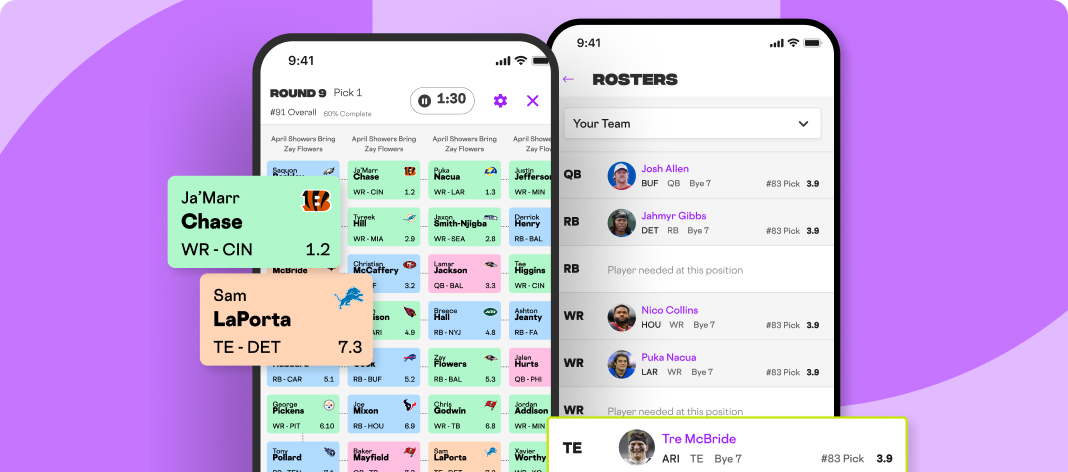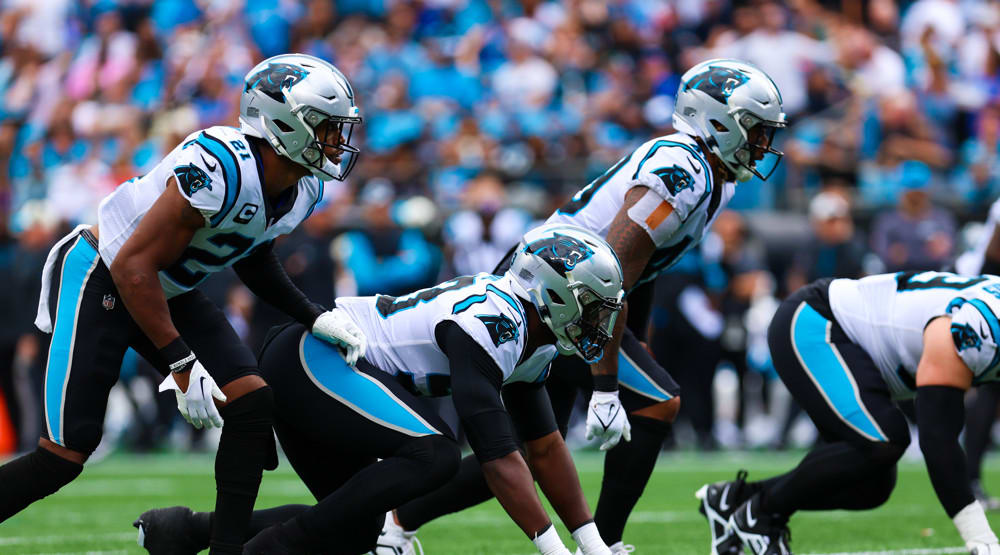Friday saw the completion of RotoWire's dynasty rookie draft. The event saw five trades during the draft and another three executed before. Here's the results:

For what it's worth, I had greater aspirations than the draft I finished with, which you can see here. It wasn't bad, but I wasn't exactly pleased either. I already got younger at quarterback by swapping Matthew Stafford for Baker Mayfield in a separate deal earlier this offseason, but history would tell you the No. 1 overall pick in the NFL Draft is conventionally a pretty air-tight asset for a duration of years, so I had to resist the siren song of Tetairoa McMillan or a possible trade back and just stuck with Cam Ward. The move up to get Matthew Golden was aggressive, as I sent Travis Kelce, Isaac Guerendo and 2.6 to move up just four spots, but I had canvassed the league relatively heavily regarding Kelce's value prior, and the non-existent nibbles were enough for me to comfortably include him in any deal that would help me gain a more liquid asset. Despite being a massive Packers homer, I'm far from a Matthew Golden fan, but there's a large subsection of the dynasty community that will automatically be attracted to insert first-round draft capital player. I believe my RotoWire colleagues are relatively impervious to such trivial analysis, but even still there was a clear tier drop off at 2.2 that I was uniquely positioned to capitalize on with a
Friday saw the completion of RotoWire's dynasty rookie draft. The event saw five trades during the draft and another three executed before. Here's the results:

For what it's worth, I had greater aspirations than the draft I finished with, which you can see here. It wasn't bad, but I wasn't exactly pleased either. I already got younger at quarterback by swapping Matthew Stafford for Baker Mayfield in a separate deal earlier this offseason, but history would tell you the No. 1 overall pick in the NFL Draft is conventionally a pretty air-tight asset for a duration of years, so I had to resist the siren song of Tetairoa McMillan or a possible trade back and just stuck with Cam Ward. The move up to get Matthew Golden was aggressive, as I sent Travis Kelce, Isaac Guerendo and 2.6 to move up just four spots, but I had canvassed the league relatively heavily regarding Kelce's value prior, and the non-existent nibbles were enough for me to comfortably include him in any deal that would help me gain a more liquid asset. Despite being a massive Packers homer, I'm far from a Matthew Golden fan, but there's a large subsection of the dynasty community that will automatically be attracted to insert first-round draft capital player. I believe my RotoWire colleagues are relatively impervious to such trivial analysis, but even still there was a clear tier drop off at 2.2 that I was uniquely positioned to capitalize on with a trade.
I'm often prone to hyperbole, but I can't recall a time where the entire first round of an all-rookie draft has as much value as this year. At least that feels true in the above RotoWire draft, one that's partially bountiful because we're playing in both a superflex and TE premium league. But even if you're in a league that doesn't hyper emphasize either position, we're talking about one of the deepest rookie running back classes in recent memory and then a wide assortment of skill players that universally someone in your league has a definitive take on. As a result, I genuinely believe there's no "wrong" move in the first round this year, but I wanted to get some insights from those that made (or didn't make) the biggest moves primarily over the course of the first two rounds to see if there was any strategical takeaways for folks still planning ahead for their rookie drafts. In chronological order, I dove into those decisions with the respective managers.
Q: No. 8 pick ended up being a sought-after selection. I had trade conversations with you and reportedly multiple other people did as well. You stayed put and took Emeka Egbuka, and immediately following someone traded a first-round pick next year to move back into the draft. Explain your rationale for sticking with the pick.
Alan Seslowky: I decided to "stick and pick," because I liked the profiles of the players that were available. I was weighing the insulated value of three players: Jaxson Dart (pick 2.1), RJ Harvey (pick 1.9), and Egbuka, whom I ultimately selected at 1.08. I passed on Dart because with Josh Allen, J.J. McCarthy and Geno Smith, I had a trio of serviceable starters plus numerous other QB trade-collateral pieces already on my roster. The decision of Harvey vs. Egbuka came down to production now vs. the perceived future. Harvey might be older for a starting running back, but he should be a contributor right away. Egbuka, who I do not expect to have a fast start due to the stacked depth chart in the Tampa Bay WR room, almost gets a pass if he has a dud rookie season, insulating his value. First-round wide receivers who the community liked before the draft seem to have long-term lasting power, unless they have a longer stretch of bad games. It was a tough choice.
Q: You made arguably the biggest move of the draft trading a first-round pick next year, despite finishing third-worst in the standings this year, to jump back into the first round to make No. 9. Was that specifically because you liked RJ Harvey, you have a lack of interest in next year's class, or a mixture of both?
Harry Thompson (imJustHarry on Sleeper): I had initially tried to trade back into the first round at 1.08. The intention was always to take Harvey, so when that pick surprisingly ended up being Egbuka, I was relieved there was still a chance to take him at 1.09. I initially offered Chris Olave for the pick, but ultimately the more aggressive offer of a future first was agreed on.
The move was never about next year's class, rather I'm just really excited about what Harvey could be. Denver is a good offense that desperately needed an improvement at the position. They went out and spent a second-round pick in a class that many considered historically great at running back. It just felt like Sean Payton and his team got "their guy" and that has been such a valuable role in the past. If my team falls apart this year and that first-rounder is a top-three selection again that will obviously sting. But ultimately I'd rather take the shot on this player and situation than the unknown of next year.
Q: You acquired Malik Nabers in a separate pre-draft deal by trading away A.J. Brown and Jameson Williams. Would you have still traded a future first for Harvey even if you hadn't executed the Nabers trade, and thus potentially accelerated your timeline?
HT: The only thing the Nabers trade really changed for me was that it forced the compensation to become future picks. I had already dealt my most valuable player in Brown, who I was planning to offer with the same goal of acquiring multiple running backs this year. So the goal was always there, just had to be flexible with the compensation.
I would have liked to acquire even more backs like Quinshon Judkins or TreVeyon Henderson if I could have, and still would!
Q: You moved back four spots in the second round, and then at wide receiver followed directly after including Matthew Golden, Jayden Higgins, Tre Harris and Luther Burden. Did the pieces that you acquired in that move back — namely Travis Kelce and Isaac Guerendo — offset the difference of WR you ultimately acquired with the later second-round pick?
Nick Whalen (wha1en on Sleeper): More or less, yes. I was particularly interested in Higgins and Golden at that original pick, but I don't view either player as enough of a slam dunk to prevent me from adding a win-now piece at tight end, plus insurance for Christian McCaffrey, who hardly factored in my championship run. Later in Round 2, I was able to add Jaylin Noel, who will provide an infusion of youth and (hopefully) develop into a starting-caliber fantasy receiver down the road.
Q: You moved up in the second round by sending Jerry Jeudy and a later second-round pick and joined a run of four straight wide receivers selected. At what point during the draft did you identify that range that you wanted to pick in, or was that something you envisioned would fall to your inital selection at 2.9 pick?
Mario Puig (ProSetFormation on Sleeper): It was probably when Whalen took Colston Loveland at 1.10, because up to that point I had considered trying to trade back up for Loveland after taking Tetairoa McMillan with the sixth overall pick. Once Loveland was off the board it occurred to me that I really didn't want to end up with a pick with all of Jayden Higgins, Tre Harris, Luther Burden and Mason Taylor off the board.
Q: I have a feeling I know the answer, but I want to make sure. Was the move brought on because of the player (Tre Harris) you acquired, or more so about avoiding what could be left at your current second-round pick?
MP: For me it would have been a letdown to have to pick what was left by the time of my original selection (2.9). It seems like Bhayshul Tuten would have been my pick by then, and he's definitely a covetable player too, but for me there was a drop off after Mason Taylor in this 1.5 PPR scoring for tight ends.











